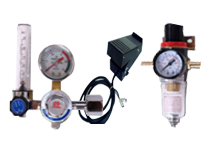
Be aware of the welding fumes and gases
For ensuring safe welding practices and to prevent accidents, guidelines are given on the principal health and safety considerations to the welders. There are certain health risks associated with the welding fumes and gases generated during the welding process. Welding fume is basically the mixture of airborne fine particles. Toxic gases are also generated during welding and cutting.
Welding fumes generally arise from vaporization of the consumable electrode wire or rod as material is transferred across the arc or flame. The fractions of particles which are especially less than 3µm are potentially more harmful as they can penetrate to the innermost parts of the lung. Composition, concentration and the length of time the welder is exposed to the welding fumes would determine the degree of risk to the welder’s health. Some of the hazards from gases include asphyxiation (lack of oxygen), fire or explosion and toxicity.
To minimize the hazards of welding fumes and gases, it is important o follow manufacturer's instructions and safety protocols. You can also reduce risk by substituting materials such as water based cleaners or high flash point solvents. Never weld on surfaces that are still wet with a degreasing solvent and do not weld near degreasing baths. It is better to avoid using chlorinated hydrocarbon degreasers. Make sure that you have adequate ventilation in the welding place to prevent displacement or enrichment of oxygen and to prevent the accumulation of flammable atmospheres.






